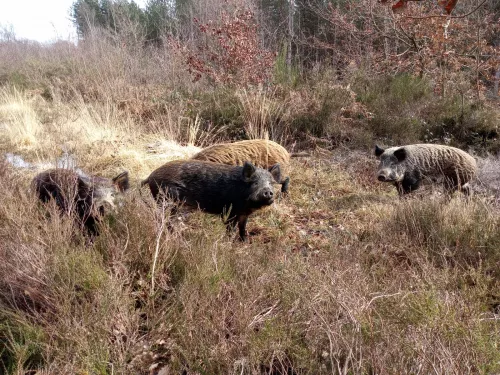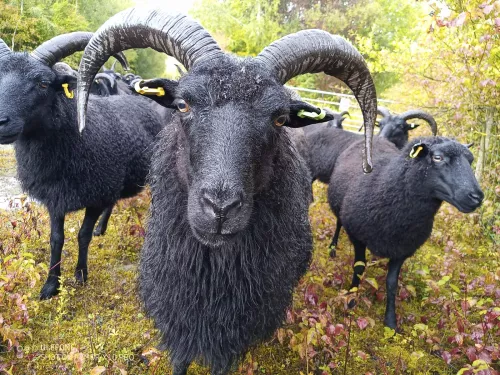
Longhorn cattle
Longhorn cattle can be many colours but they are almost always brindle (splattered/stripey) with a white line down the spine. They have long backs and can have very impressive horns.

Find out about Exmoor ponies and why we use them in our Wilder Grazing strategy.
These iconic wild British horses are loved by conservationists across Europe. They live a long time - our oldest pony is now 30 years old, having been with us for almost 25 years, working across the county in a multitude of different habitats.
The coats of these ponies range from bright chestnut to dark brown. They have dark legs, manes and tails which are sometimes tipped with gold. They have a light-coloured muzzle and rings around their eyes that are very distinctive of the breed.
This breed is compact and strong with neat feet and a good sense of balance. They have hooded eyes, long lashes and a thick, short tuft of hair at the top of the tail. These are all adaptations to cope with the blizzard conditions of Exmoor during the winter. These ponies do best on sparse vegetation, having been raised on the heather and gorse of the moor. They are wary and suspicious, keeping their distance from all but the people they know the very best.

Longhorn cattle can be many colours but they are almost always brindle (splattered/stripey) with a white line down the spine. They have long backs and can have very impressive horns.

These pigs are as close as you can get to the wild boar and also, despite being a domesticated version of this wild species, share many of its traits.

An all-black compact mountain sheep with a taste for bramble and young scrub.